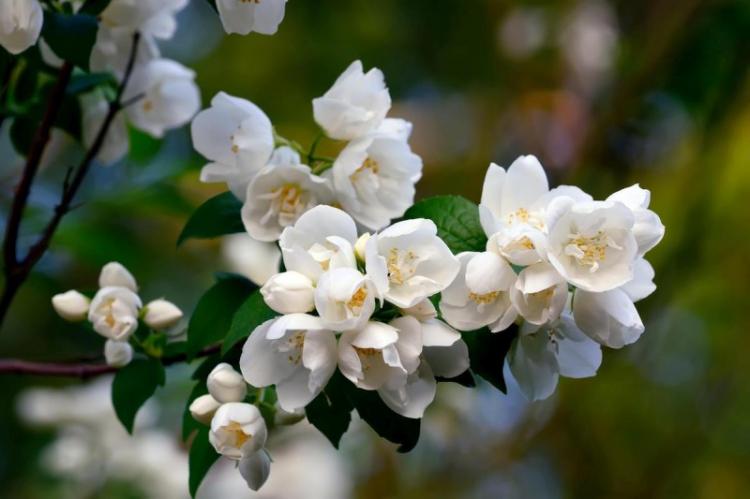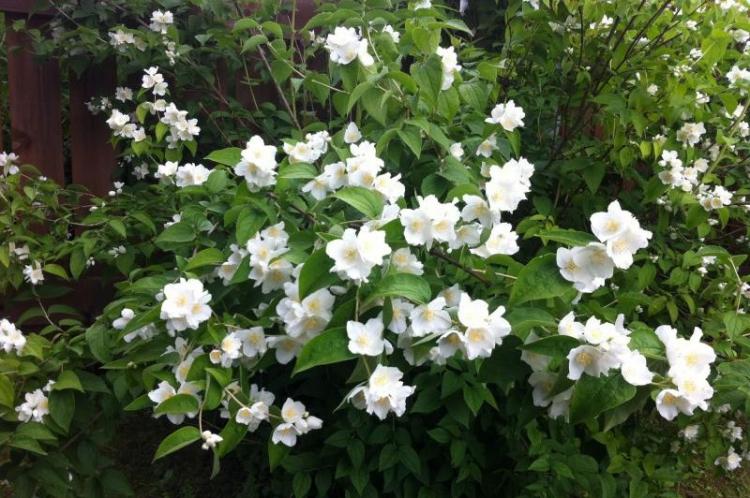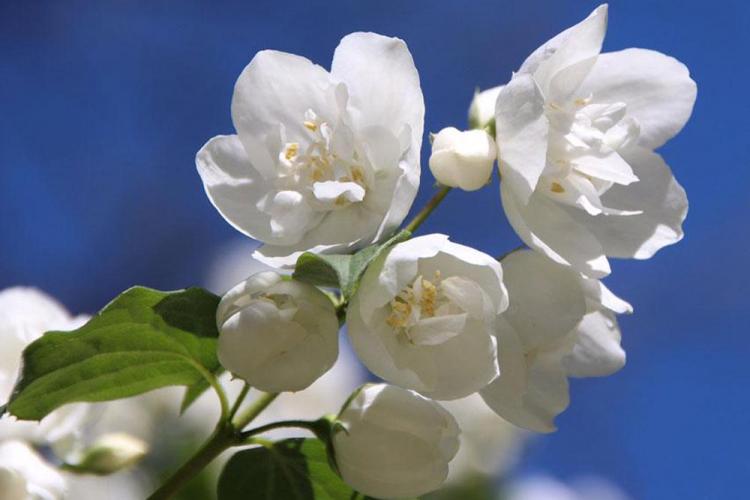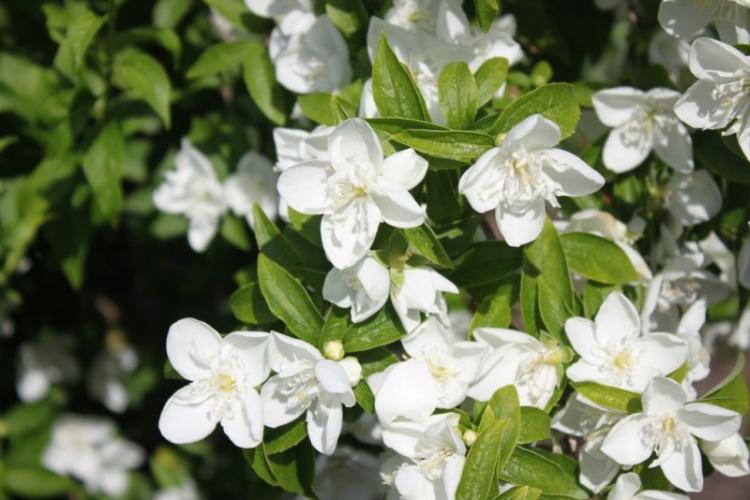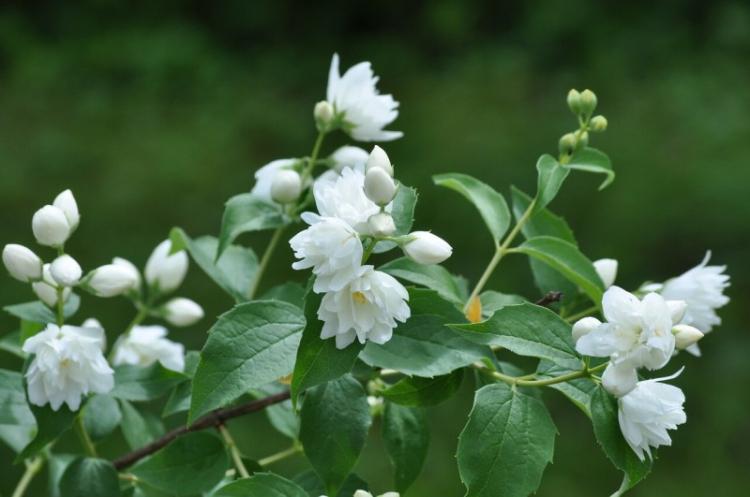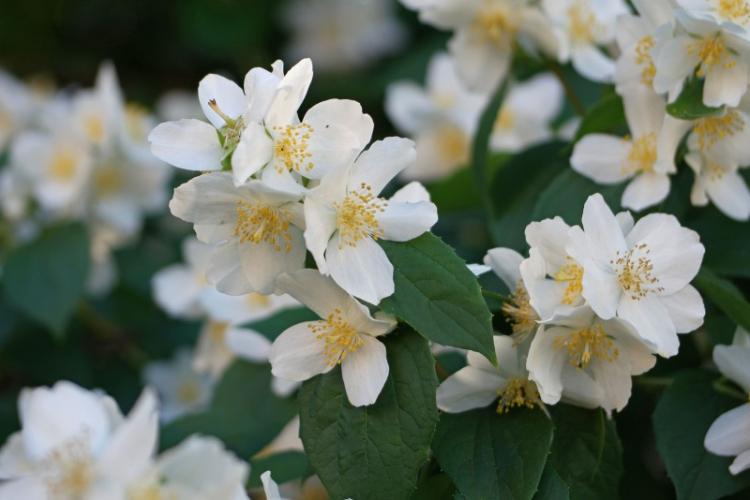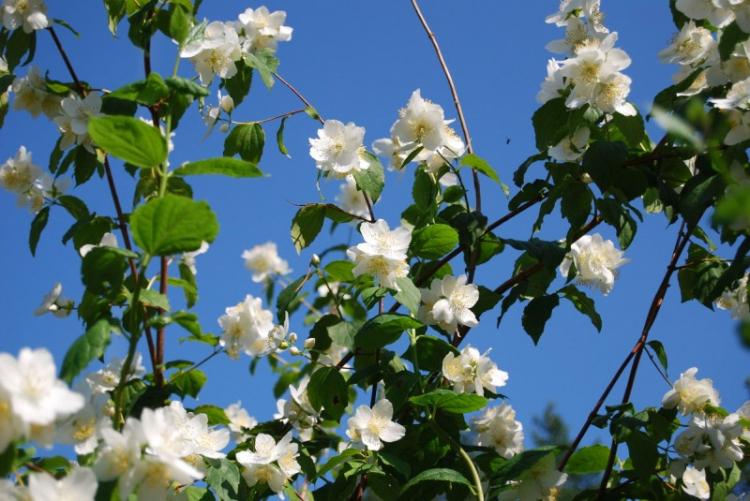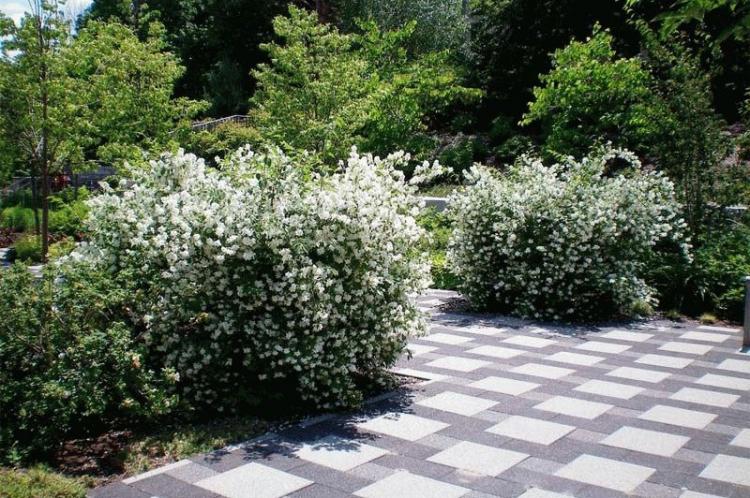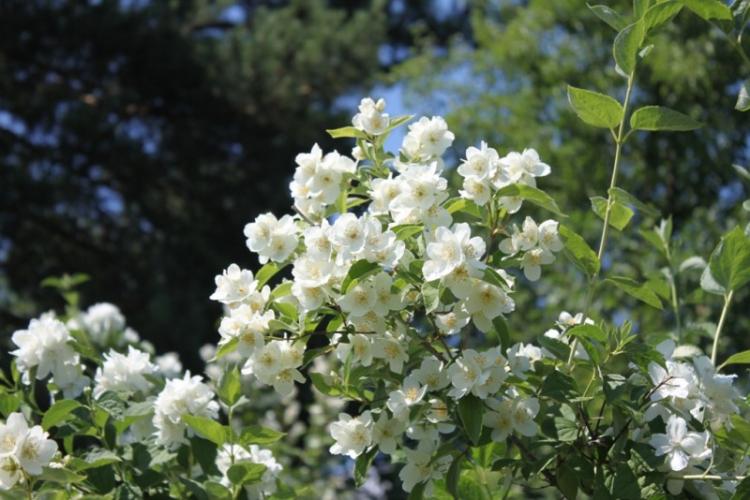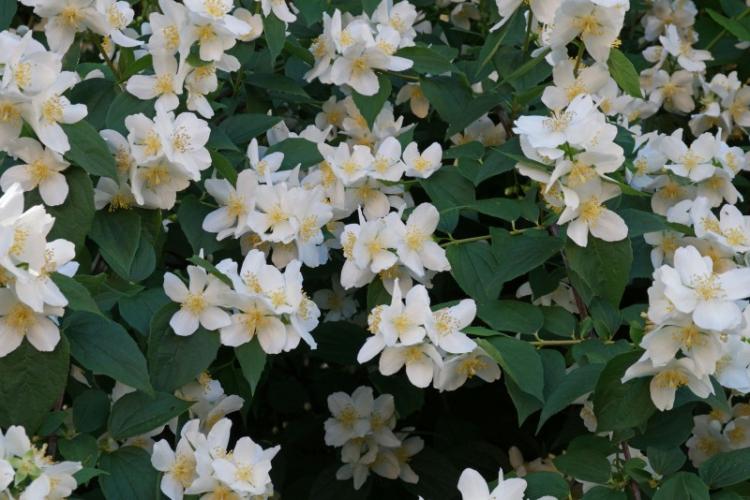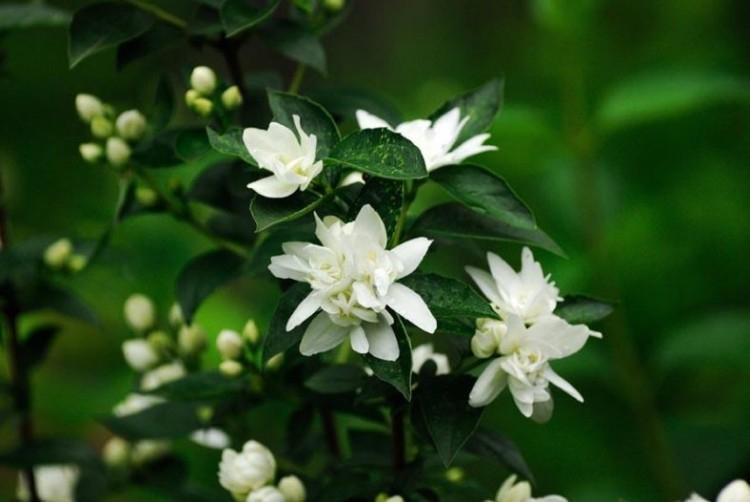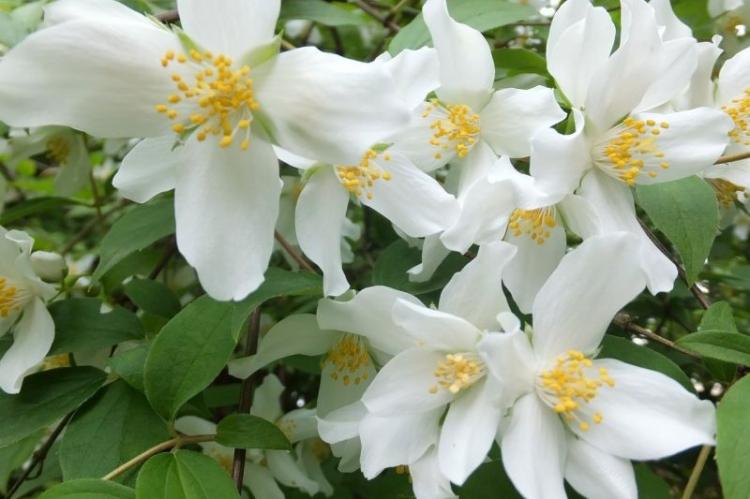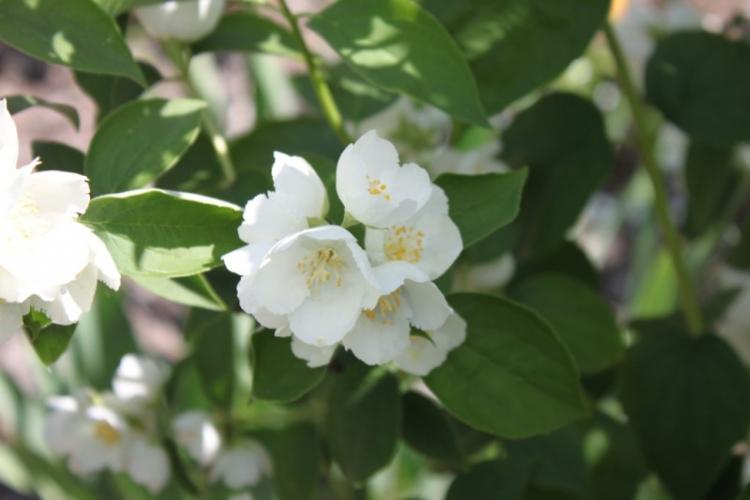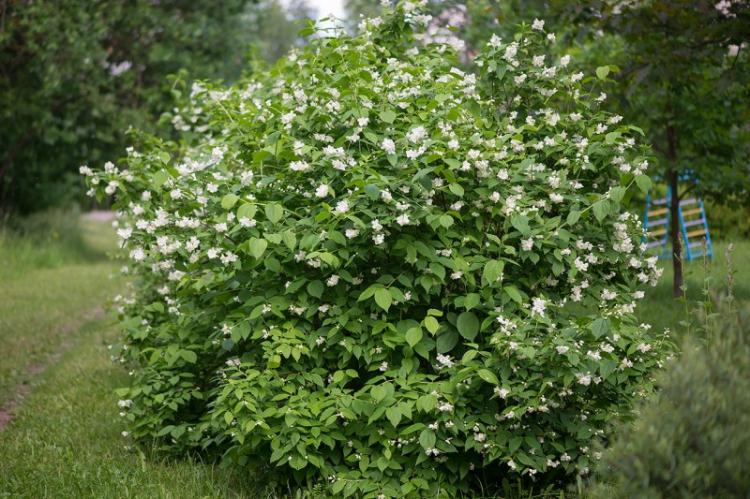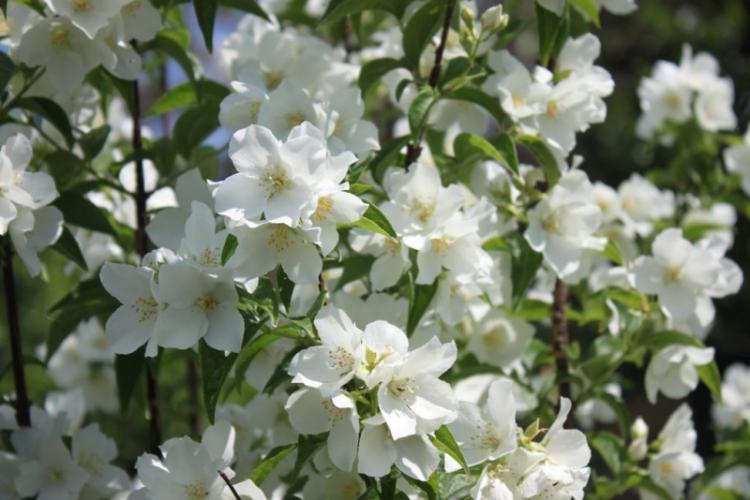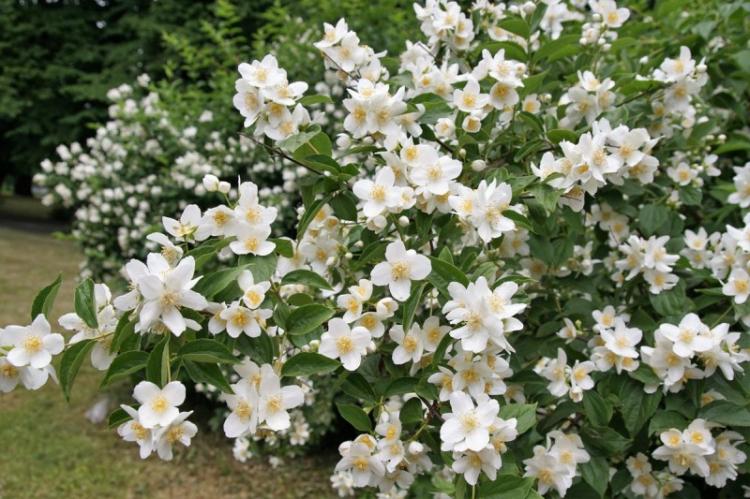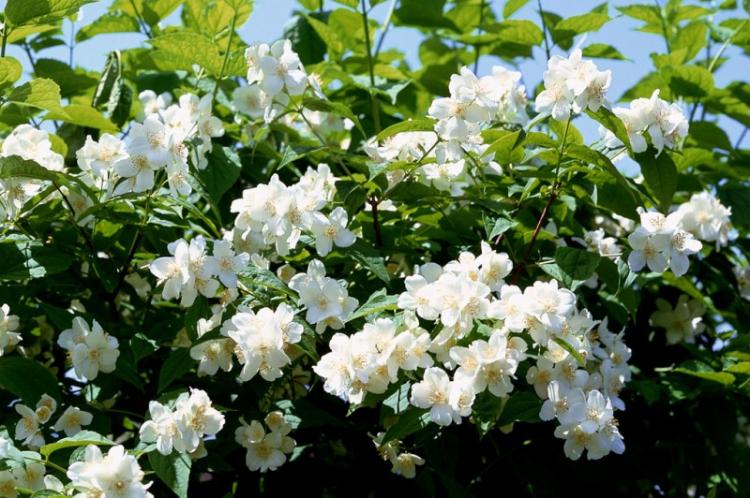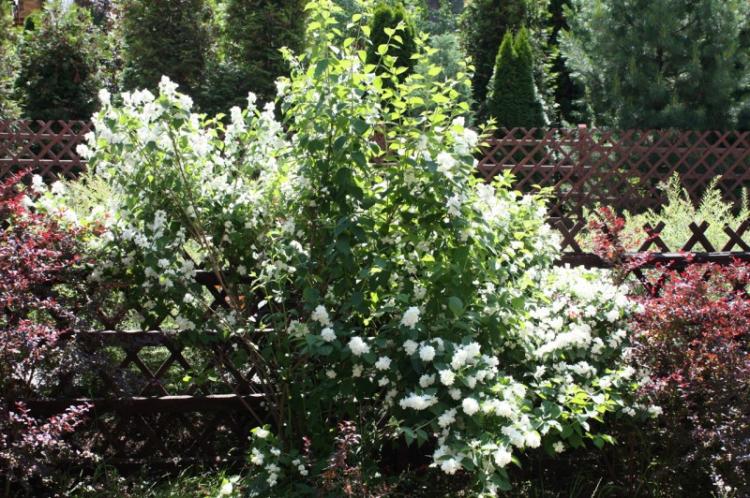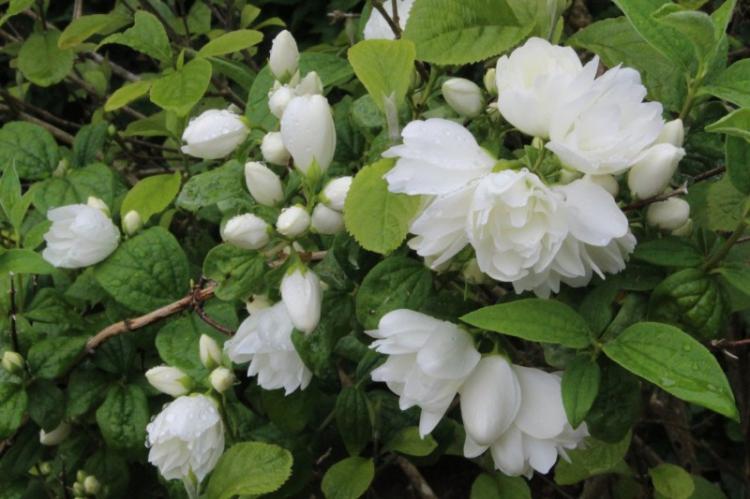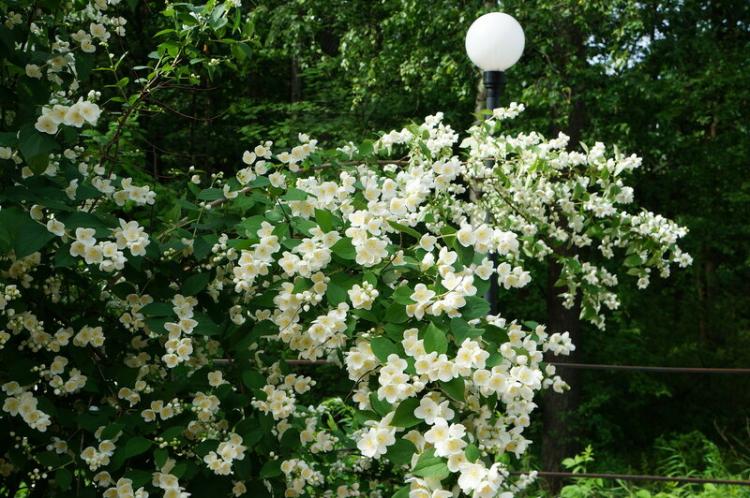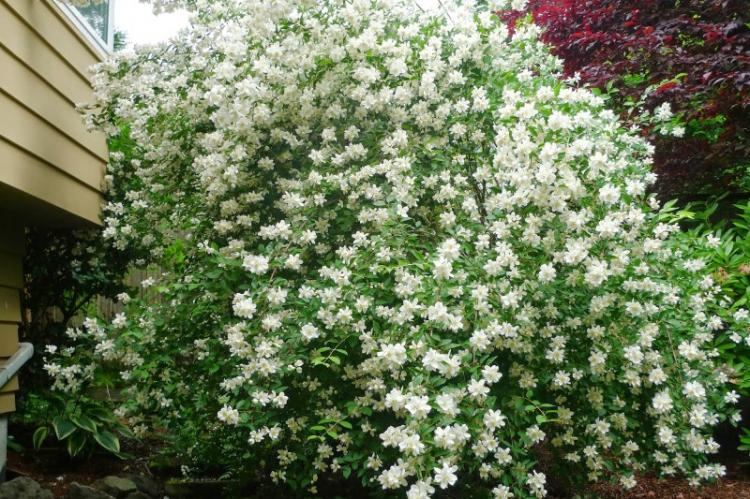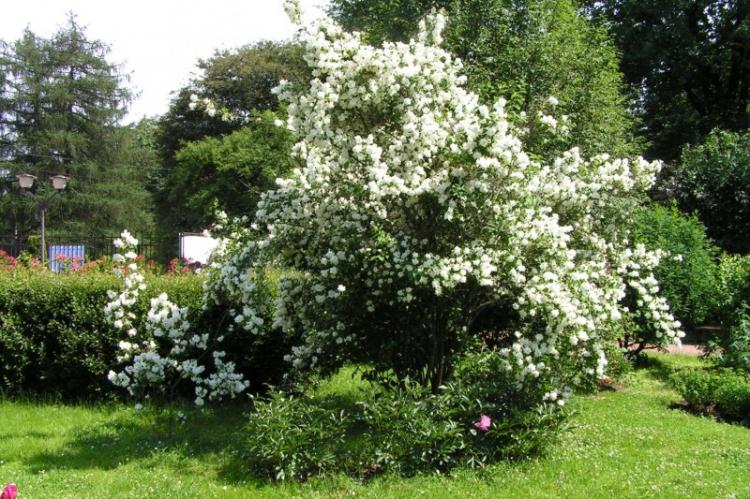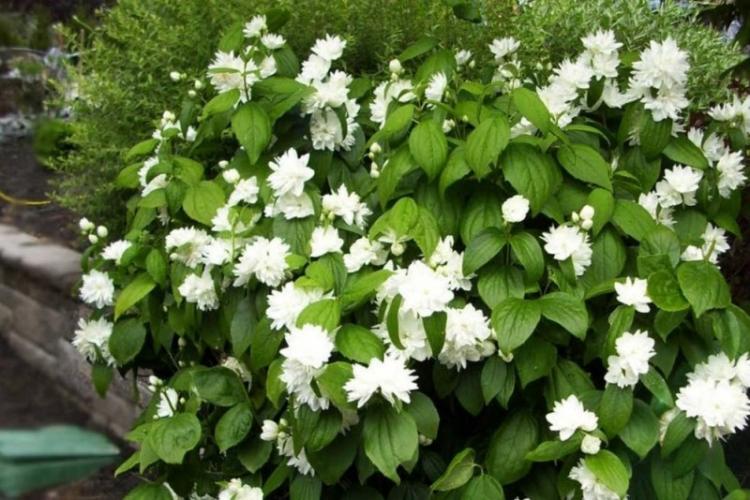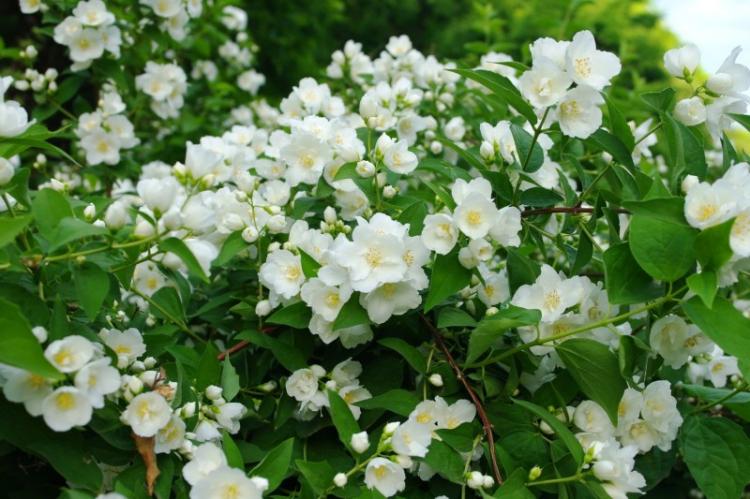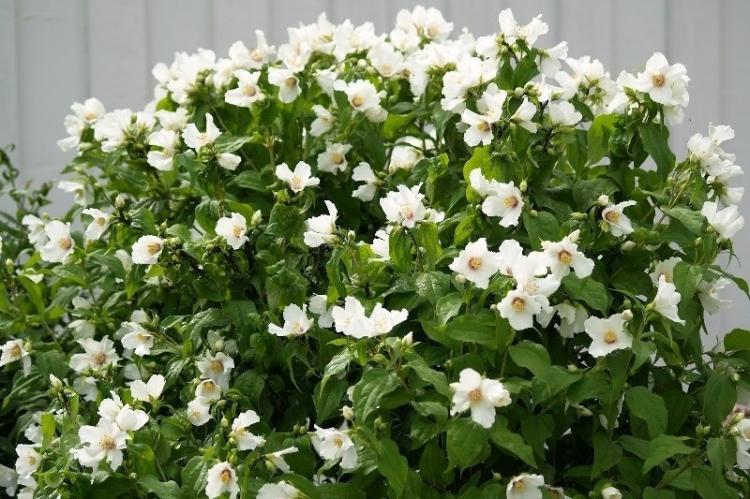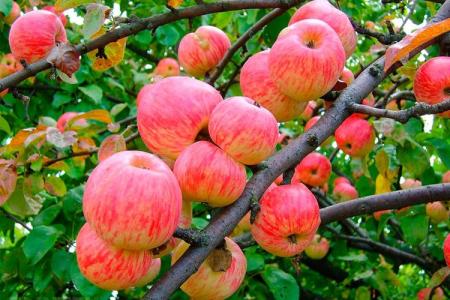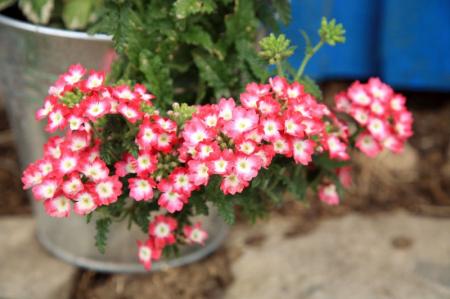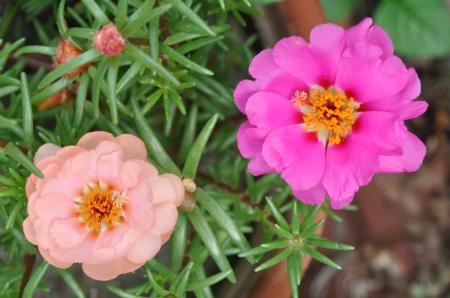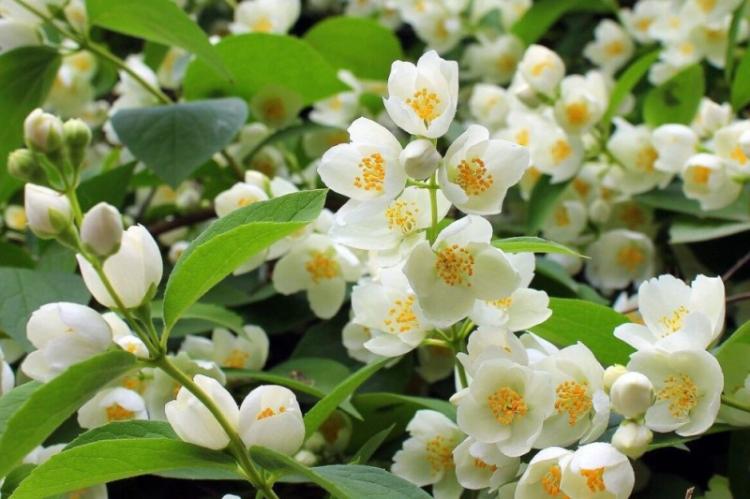
Looking for perennial ornamental shrubs for your garden? Then pay attention to the chubushnik, which is not in vain called the garden jasmine. It will fill your area with a unique delicate aroma and delight you with graceful snow-white inflorescences. And we are ready to tell you what it is like and how to care for it!
general characteristics
Chubushnik is not a real jasmine, as it was nicknamed by the people for a similar shade and aroma. In fact, it belongs to the Hortensiev family and thrives in America, Southern Europe and East Asia. A chubuk is a part of a smoking pipe in the likeness of a mouthpiece, for the manufacture of which a chubushnik was used in ancient times.
Young shoots are covered with a thin brownish bark that thickens over time, coarsens and turns gray. In this case, the shoots that diverge from the rosette of the rhizome can be not only straight, but also drooping.
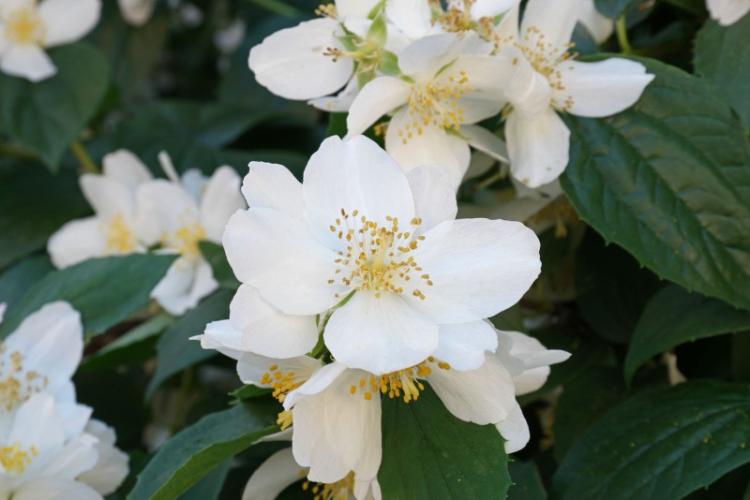
The foliage of garden jasmine is a rich juicy green, but there are varieties with light or golden leaves. Traditionally, they are oval or ovoid, slightly tapered to the edge. The size depends on the specific type of chubushnik: from 2 cm for dwarf species to 9 cm for ordinary ones.
Inflorescences are white or cream-colored, less often there are two-color ones with a pinkish or lilac sheen. But the shape of the flowers is significantly different in the number of petals and terry. There are large varieties up to 10 cm in diameter, and there are even bell-shaped inflorescences.
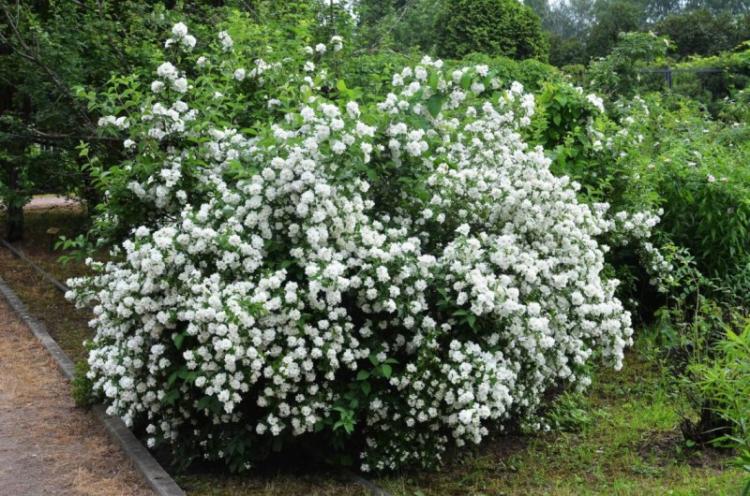
Types of chubushnik
There are about 70 varieties of chubushnik, but breeders and gardeners mainly grow a few of them. These are small undersized bushes, and high spreading shrubs up to 4 meters.
Large-flowered chubushnik
In the wild, the large-flowered mock-orange is common in North America and grows up to 3 meters. It has strong, large shoots and pointed, sparsely toothed leaves up to 7 cm long. Flowers up to 5 cm in diameter are collected in snow-white clusters of 3-5 pieces - one of the most spectacular varieties. Large-flowered chubushnik tolerates shade better, but at the same time it is more thermophilic.
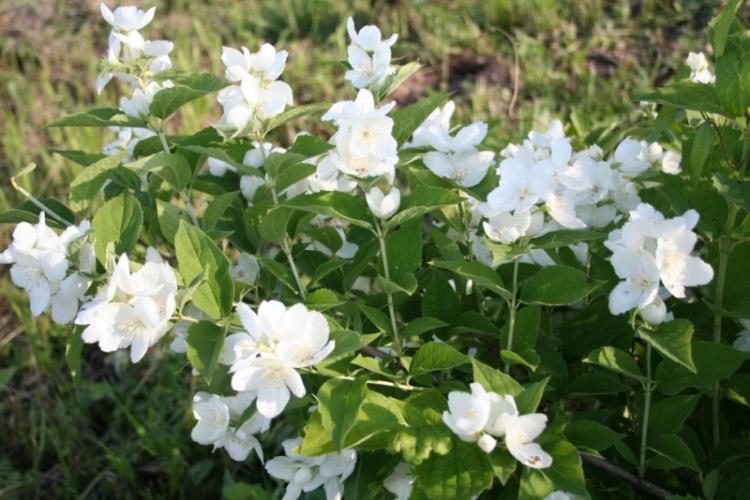
Small-leaved chubushnik
A dense, straight, deciduous shrub grows up to 1.5 meters with short pointed lanceolate leaves. Against their background, single snow-white flowers, sometimes collected in small brushes, stand out especially brightly. In season, they cover the bush almost completely and emit a unique strawberry aroma.
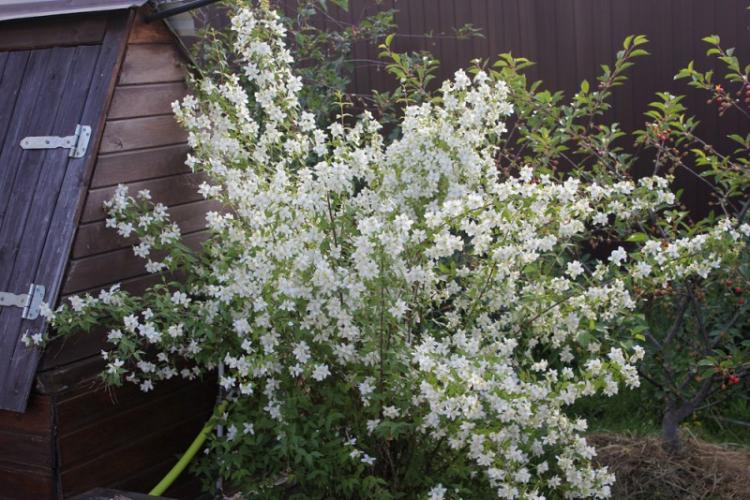
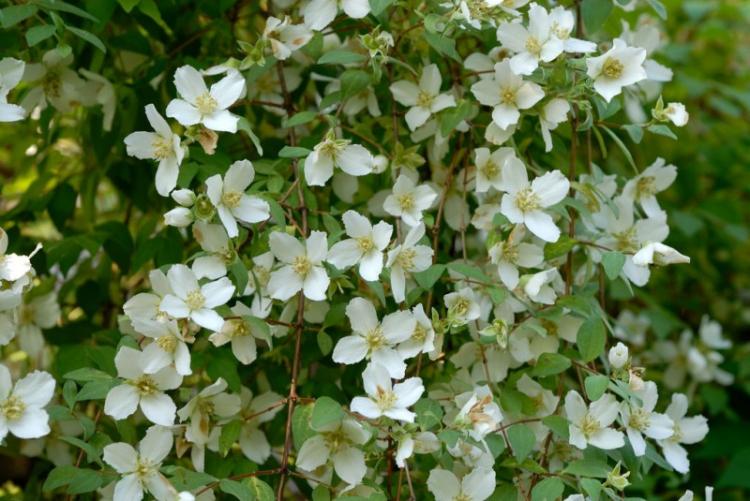
Ordinary mock-orange
The common chubushnik is also called White - this is the most common and classic variety native to the Caucasus and Western Europe. It is as unpretentious as possible to the conditions and type of soil, therefore it is actively used for landscaping in mid-latitudes. An ordinary chubushnik has several decorative forms that differ in the type of flowers: terry, golden, silver-bordered, large-colored, etc.
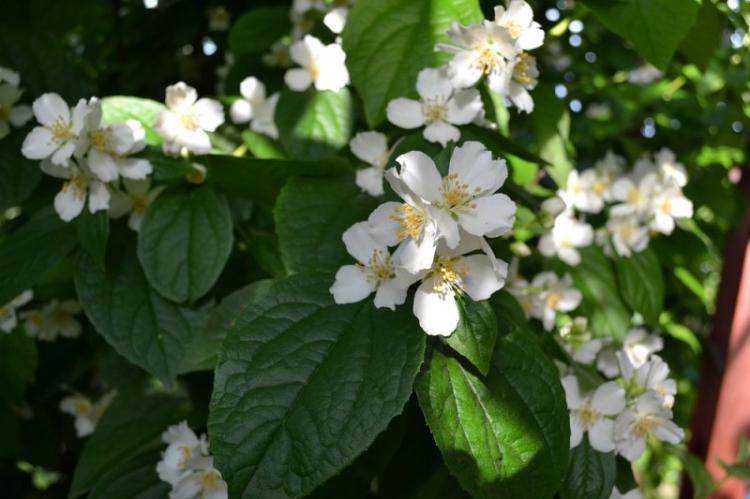
Coronal chubushnik
The crown mock-orange is similar to the common one, but differs from it in the yellowish or reddish shade of the shoots. Cream flowers open up to 4.5 cm in diameter and they are collected in cluster inflorescences of 5-7 pieces. Abundant flowering continues until the age of 30, regardless of the weather and the severity of winters.
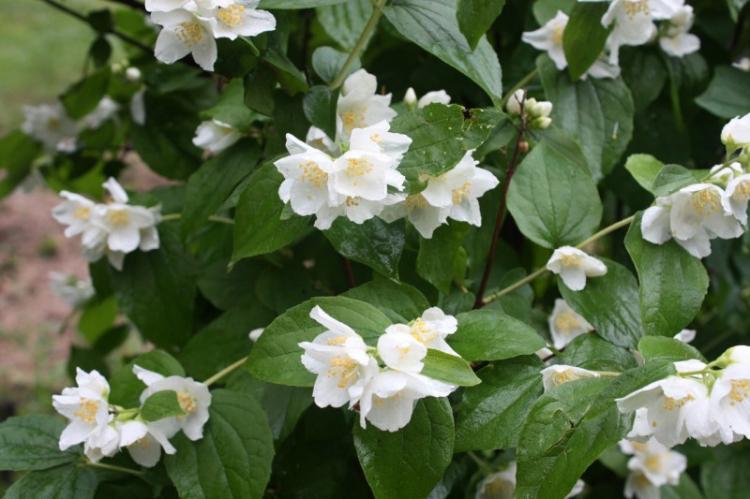
Fluffy chubushnik
The fluffy chubushnik got its name from the characteristic edge of the leaves on the back. It is imported from North America, but is more common in Asia. Another feature is the bell-shaped form of flowers on a shrub up to 2 m high.
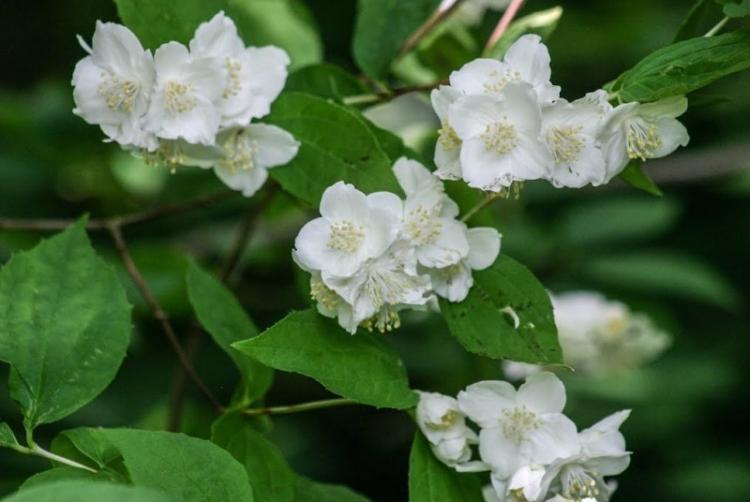
Chubushnik Lemoine
This is a hybrid variety that originated from the combination of an ordinary and small-leaved mock orange. Large flowers are collected in the same large clusters of up to 7 pieces, and the length of lanceolate leaves is only up to 4 cm. These are highly decorative shrubs that are often used for landscaping parks.
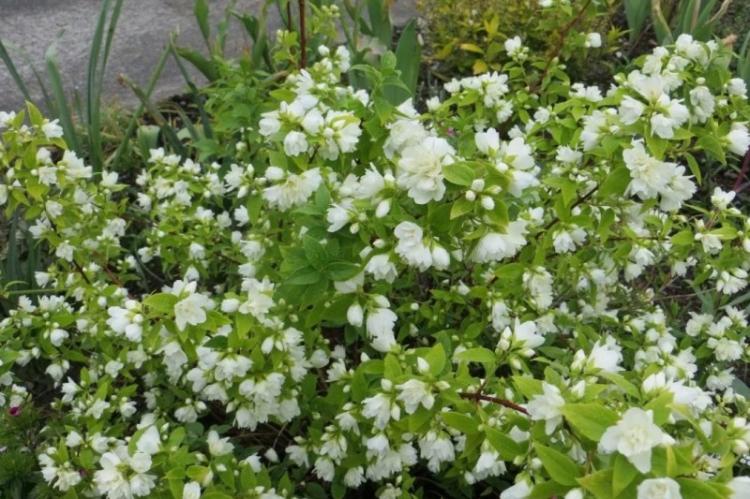
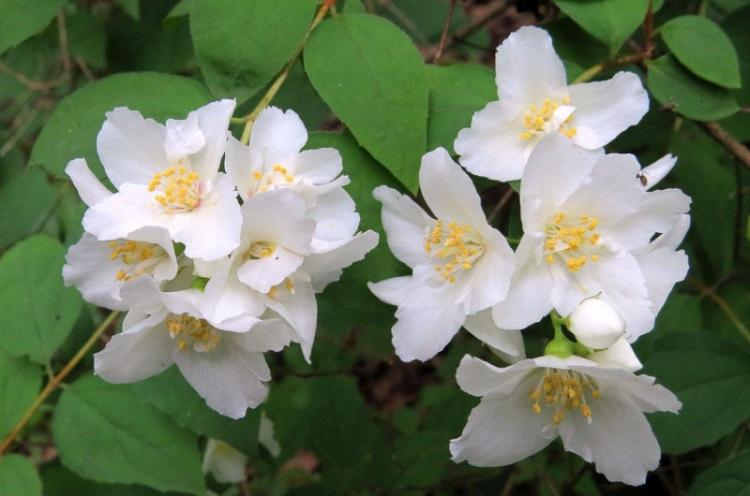
Odorless chubushnik
Odorless chubushnik is a rare variety without a characteristic aroma, but with interesting decorative properties. The spreading bush grows up to 4 meters and blooms later with the same large flowers up to 5 cm. The leaves are expressive and large against the background of brown cracking bark.
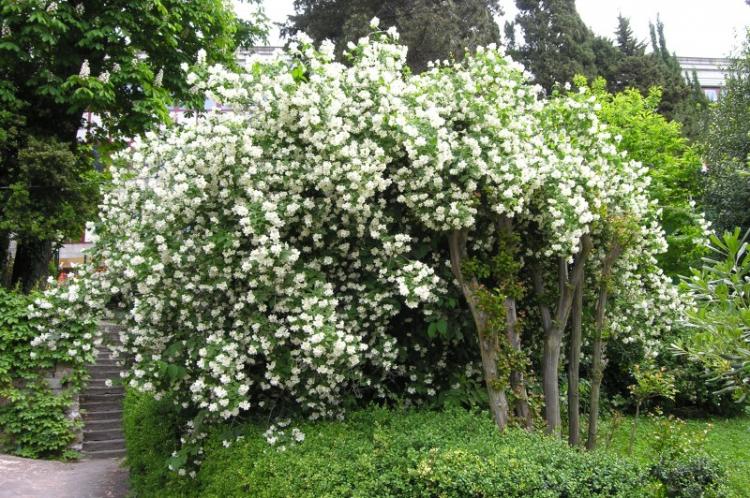
Chubushnik care
If you immediately select the conditions for planting the mock-orange, in the future you practically will not need to care for it. It is absolutely self-sufficient and unpretentious in everyday life, for which it is appreciated by gardeners. That is why landscape designers use a chubushnik even when building a hedge.
Temperature
Temperature has little effect on the state of the chubushnik - the main thing is to avoid drought. Cutting is quick and successful if the daily temperature fluctuates around 20 degrees.
By winter, most varieties of chubushnik are insensitive, but in the case of young seedlings, clarify this question for a specific species. The main thing for frost is to mulch the rhizome with peat, straw or other suitable materials. And then even if the entire ground part is completely frozen, the bush will quickly recover in spring.
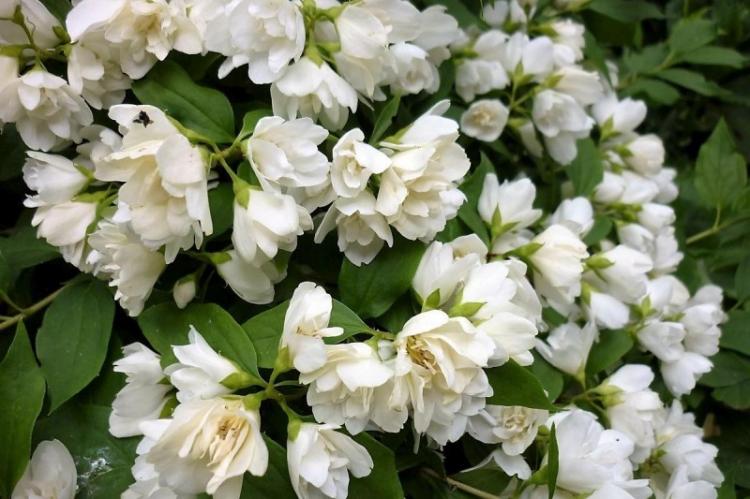
Lighting
Chubushnik normally feels in a shaded area, but due to lack of sun, it practically does not bloom. Shoots stretch more, but if decorative properties are in the foreground, choose a sunny area.
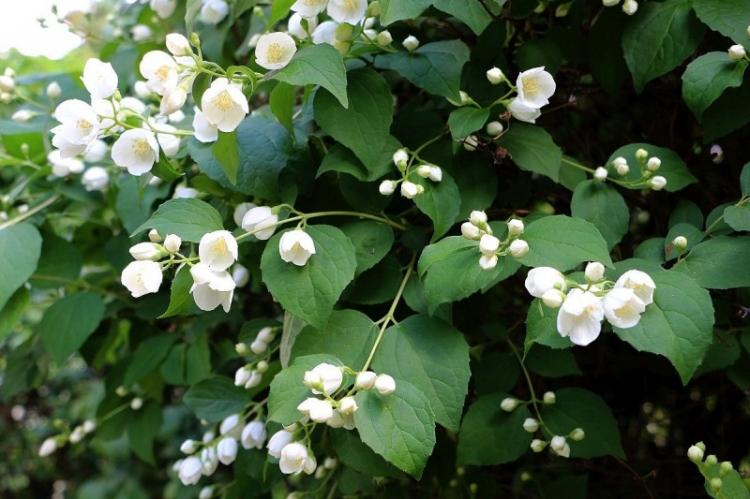
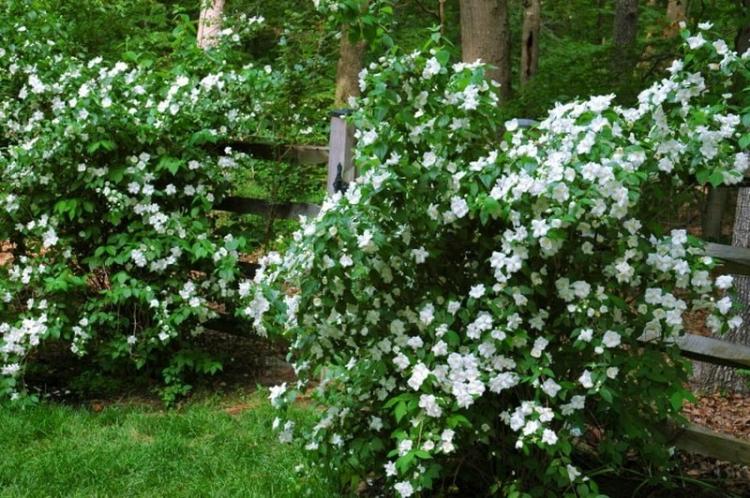
Watering
Unlike many garden flowers, the bushy mock-orange does not tolerate drought well. Lack of moisture almost instantly affects the leaves: they lose their elasticity, become lethargic and sag. During flowering, the bush needs to be watered almost every day, and normally - weekly.
After watering, be sure to weed and loosen the soil so that the water does not stagnate and the roots do not start to rot. Along the way, remove weeds and damaged fragments. To simplify daily care, you can pre-mulch the area before planting the chubushnik.
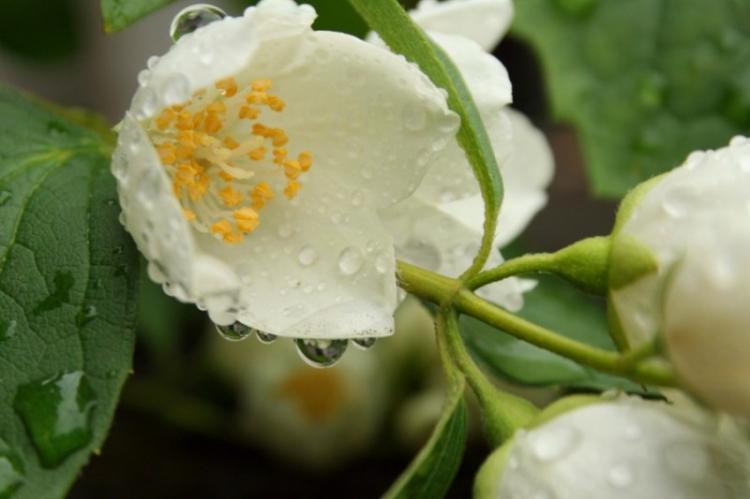
Fertilizers and feeding
Garden jasmine accepts ordinary mineral fertilizers well: it is enough to pour out a bucket of solution in the spring once a year. And in the fall, after flowering, an adult bush is fertilized with ordinary wood ash in a circle.
A young chubushnik does not need anything else, but from the fourth year you can gradually introduce mineral fertilizers: phosphates, urea, potassium. Add any nitrogen mixtures carefully so as not to overdo it, and only in the spring.
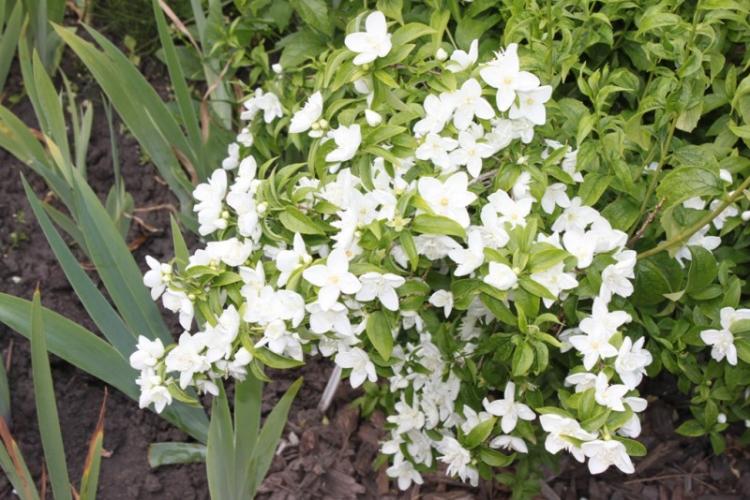
Pruning
Like other flowering shrubs, for beauty and a neat look, the chubushnik needs to be periodically trimmed. If this is not done, the bush looks untidy, because new and old shoots bloom in completely different ways.
At the end of each flowering season, it is recommended to cut off faded branches up to new ones. So all resources are directed to young shoots, they grow faster and stronger, and the next year they please with a riotous color.
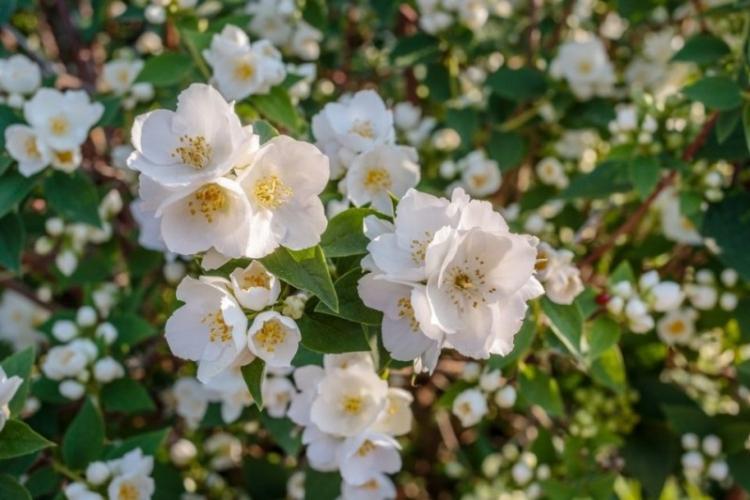
In the fall, sanitary pruning is carried out: removal of painful, broken, dry branches. Thin areas that are too dense, otherwise the shoots will interfere with each other's growth.
And if you want to completely rejuvenate the chubushnik, in early spring, shorten the trunks almost to the level of the soil and process the cuts. The main thing is that by this time the active circulation of juice has not yet begun - and by autumn you will already see young strong shoots.
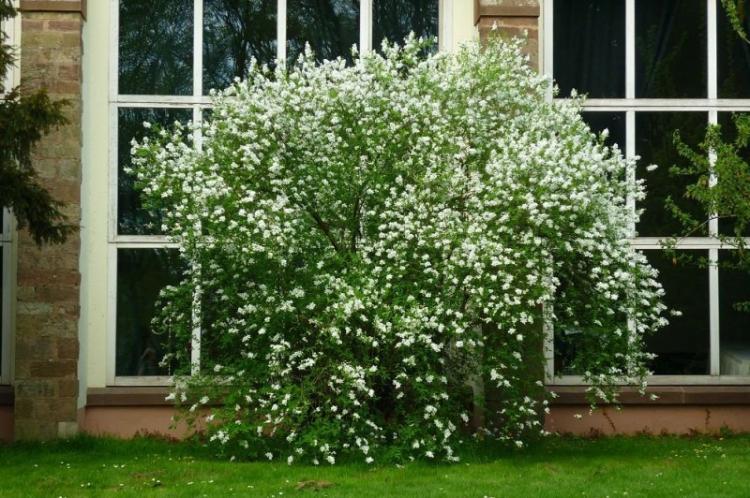
Planting and breeding
In order for the mock orange to bloom well and turn green, it must be planted in early spring before bud break or already at the beginning of autumn. Fertile, drained soils are better suited, but in general, garden jasmine is unpretentious to the soil.
For planting, prepare a pit 0.5x0.5 m in advance, then arrange drainage and lay out a layer of expanded clay or crushed stone. For filling, leafy earth with sand and humus is suitable, and do not forget about abundant watering and mulching. Do not bury the seedlings too deeply: 2-3 cm is enough for it to take root, but not rot.
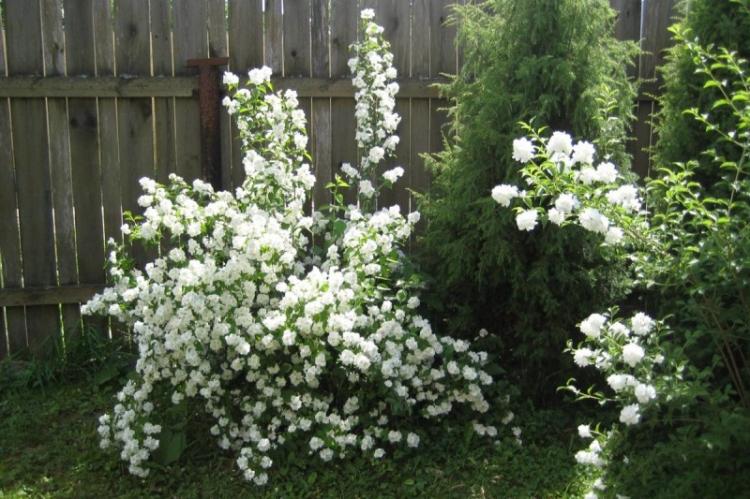
Garden jasmine makes a beautiful hedge: for this, plant the bushes at intervals of a little more than 0.5 m.In order not to dig individual holes, you can prepare a flat trench in advance.If you are planting a mock-orange separately, plant it 1-1.5 from other trees and bushes.
To transplant a chubushnik, you will have to radically thin out its crown: half of the old shoots at the root, and half - to about the middle. But then the shrub tolerates the procedure well and quickly takes root in a new place.
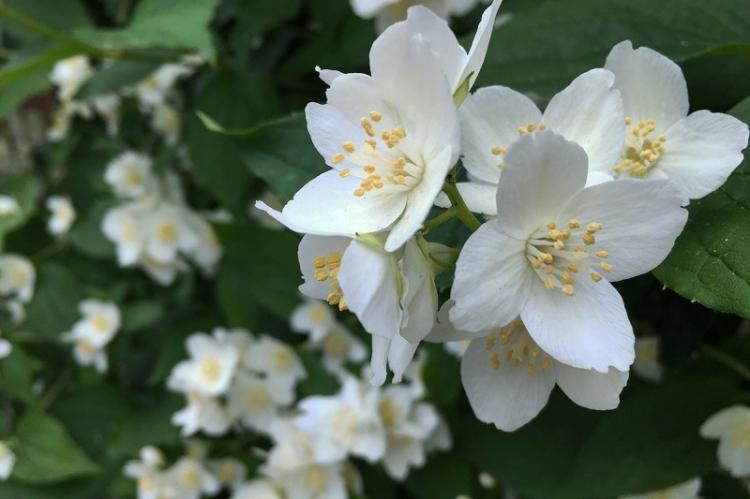
Pest and disease control
If you follow all the conditions of detention, the mock-orange is almost no more, but even he is not one hundred percent insured. The most common problem is gray rot, for which it is not enough to treat the bush with a fungicide. First, be sure to collect the fallen leaves, cut through the plant and remove any damaged areas so that the disease does not spread.
Septoria spotting is another fungal disease that manifests itself in the form of rounded brown spots, necrosis and black fruiting bodies. It is easy to notice visually if you regularly inspect the bush. Keep in mind that the infection persists even in plant debris, therefore, in addition to fungicides, be sure to destroy all damaged areas.
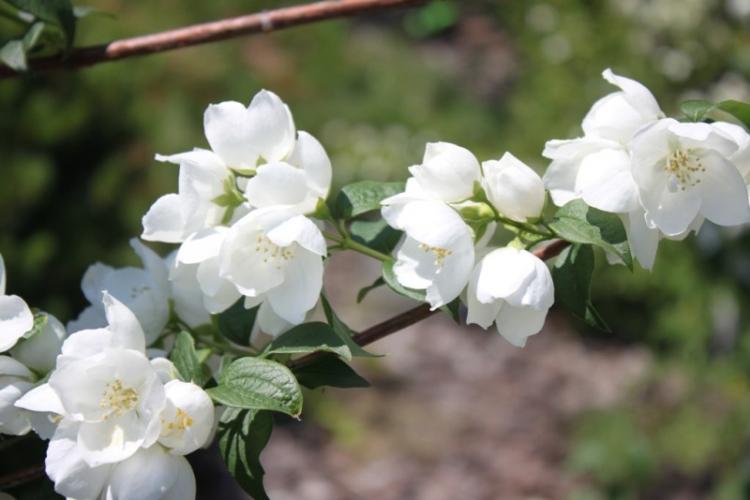
Use insecticides from early spring to prevent small bean aphids. In summer, hawthorn butterflies appear, which drink flower nectar and multiply on the leaves. This is a common problem in all deciduous trees and shrubs.
Less common are click beetles and their larvae, which gnaw at roots and leaves. To avoid this, in addition to drugs, do not forget about drainage of the site, removal of weeds and liming of acidic soil.
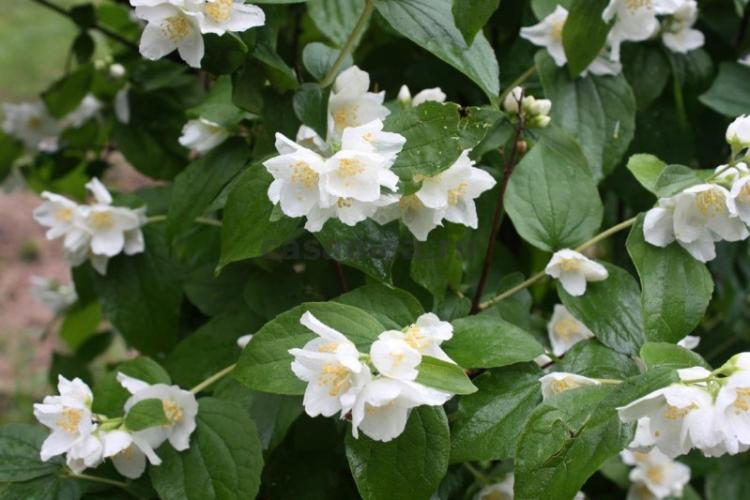
Chubushnik - photo
To make sure that the chubushnik is by no means an ordinary-looking bush, but a real garden attraction - we have selected this selection of photos for you! Happy viewing!
